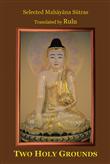 
Buddha Sutras |
 |
 
Mantras Sanskrit |
Last updated 11/2012 





 Book information on Home page
Book information on Home page
Sanskrit
Table B. Pronunciation of Vowels
Table C. Pronunciation of Consonants
Table A. The Sanskrit Alphabet
|
| |
25 Consonants, 4 Semi-Vowels, 4 Sibilants |
13 Vowels |
| Unvoiced |
Voiced |
Voiced |
Un
aspirate |
Aspirate |
Sibilant
(aspirate) |
Un
aspirate |
Aspirate |
Nasal |
Semi-
vowel |
Simple |
Diphthong |
| Short |
Long |
Long |
| 1. Velar |
ka |
kha |
ha |
ga |
gha |
ṅa |
|
a |
ā |
a+i
=e |
ā+i
=ai |
| 2. Palatal |
ca |
cha |
śa |
ja |
jha |
ña |
ya |
i |
ī |
| 3. Cerebral |
ṭa |
ṭha |
ṣa |
ḍa |
ḍha |
ṇa |
ra |
ṛ |
ṝ |
|
|
| 4. Dental |
ta |
tha |
sa |
da |
dha |
na |
la |
ḷ |
|
a+u
=o |
ā+u
=au |
| 5. Labial |
pa |
pha |
|
ba |
bha |
ma |
va |
u |
ū |
| Anusvāra |
| | | | |
ṁ |
| | | | |
| Visarga |
| |
ḥ |
| | | | | | | |
Note:
- The sounds of the twenty-five consonants are formed by complete contact of the tongue with the palate.
- The four semi-vowels are voiced and unaspirated, and their sounds are formed by slight contact.
- Three of the four sibilants (excepting ha) are unvoiced and aspirated, and their sounds are formed by half contact. Note that ha is a voiced velar sound but classified as a sibilant.
- Voiced consonants are low and soft; unvoiced consonants are crisp and sharp. To feel the difference between a voiced and an unvoiced sound, hold the front of your throat with your hand and pronounce a syllable. It is a voiced sound if your hand detects a vibration in your throat, an unvoiced sound if no vibration. To know the difference between an aspirated and an unaspirated sound, place your palm in front of your mouth and pronounce a syllable. It is an aspirated sound if your breath hits your palm, an unaspirated sound if there is no hit. Native English speakers may find it difficult to pronounce the five unvoiced, unaspirated syllables in column one. This difficulty can be overcome once you understand the difference.
- In table A, each consonant is followed by the short vowel a to facilitate pronunciation. To learn the Sanskrit alphabet, follow the pronunciation guideline in table B and table C. Recite the thirteen vowels in table B row by row. Recite the thirty-three consonants in the first column of table C, also adding the short vowel a to each. Unlike the consonants, the sounds of anusvāra and visarga in the last two rows of table A or table C depend on the vowel preceding them. Textbooks include them with the vowels.
- To follow an audio, you can download table B or table C, and minimize the Media Player window to see the words. If you set the Media Player to Repeat mode, the recording will continue to play until you close the Media player or download another audio-supported page.









